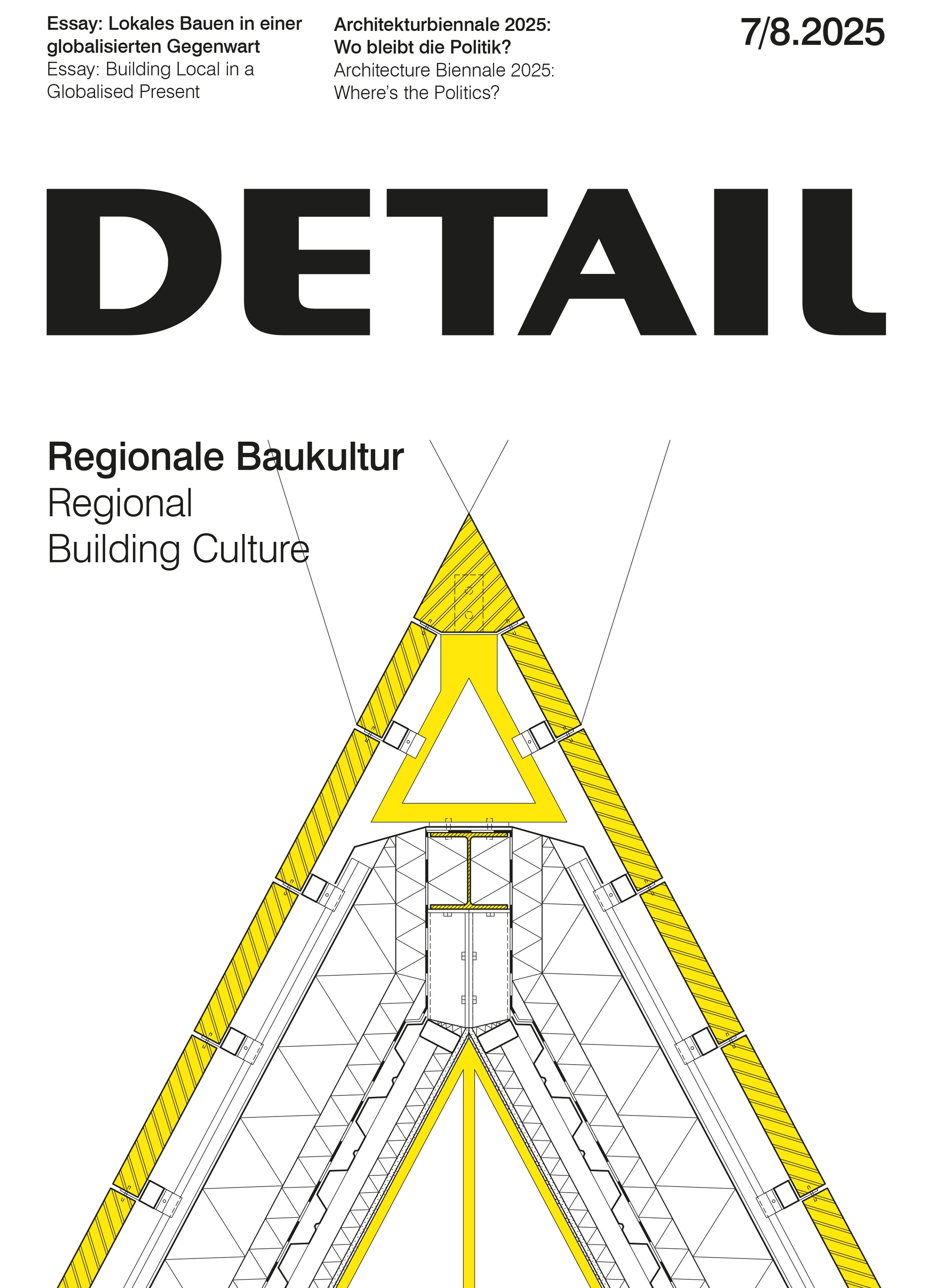Faith Museum, Detail
July 2025
Images Nick Kane, David Valinsky & Níall McLaughlin Architects
Text Níall McLaughlin Architects
A medieval tithe barn was the inspiration for the Faith Museum, designed by Níall McLaughlin Architects and built on the grounds of Auckland Castle in Bishop Auckland in Northern England. With the exception of a gable window that affords views of the castle garden, the new edifice is practically windowless. Cop Crag sandstone from neighbouring Northumberland envelops the museum for ecclesiastical arts from plinth to roof ridge.
The new construction follows the master plan for the castle site developed in 2013 by Níall McLaughlin Architects and partnering Purcell Architects. The client, the Auckland Project, is a foundation established in 2012 by entrepreneur Jonathan Ruffer, who comes from the region. The foundation is dedicated to the preservation of the castle and the advancement of local tourism. For more than 800 years, from 1183 to 2011, Auckland Castle was the seat of the Prince Bishops of Durham. After its ownership passed over to the Auckland Project, many objectives were achieved: The castle was renovated by Purcell Architects and now houses an exhibition on the history of the Prince Bishops. The gardens were redesigned by landscape architect Pip Morrison, and in 2018 Níall McLaughlin Architects realised a visitor centre with observation tower in front of the entrance to the castle. The foundation also purchased multiple buildings in the town and transformed them into museum spaces or hotels.
To date, the Faith Museum is the only new edifice on the castle grounds. Its floor plan is inspired by a predecessor building that was discovered in the course of archaeologica excavations on site. The southern facade lines up with the wall surrounding the castle grounds. On its northern side, where the main entrance to the museum is located, the structure is connected to the existing castle. From here, visitors can access the ground floor of the new building, reach the floor above and complete the tour inside historic Auckland Castle. The side exit of the new museum also leads to the adjacent Faith Garden in the east, which is part of the museum tour. On the basement level, Níall McLaughlin Architects created a climate controlled storeroom for works of art.
The natural stone used for the facades matches the exterior of the historic castle and displays a more vivid texture. Few details structure the wall and roof surfaces consisting of smoothly cut blocks: a plinth built of rough hewn split face stone along the east, four slender lancet windows within the longitudinal facades, and most of all, the striking gable crosses consisting of solid stone plates. This symbolic element can be found along many sacred buildings across the globe – from Irish stone chapels to the Ise shrine in Japan.
Entering the building presents a completely different picture to visitors. Walls and ceilings display gypsum board panelling. On the ground floor, the architects created three exhibition spaces orthogonal in plan and of nearly the same size. The upper floor houses a continuous and extensive space, crowned by the steeply pitched roof. Considering the closed character of the exterior, the construction comes as a surprise: The natural stone panels are connected to lightweight standing seam cladding set on top of corrugated sheet metal panels. Thin, rectangular hollow steel sections measuring 100 × 50 mm are integrated into the roof surfaces. Together with a filigree king post type structure consisting of only 25 mm thick solid steel members, they bear the entire roof load.
